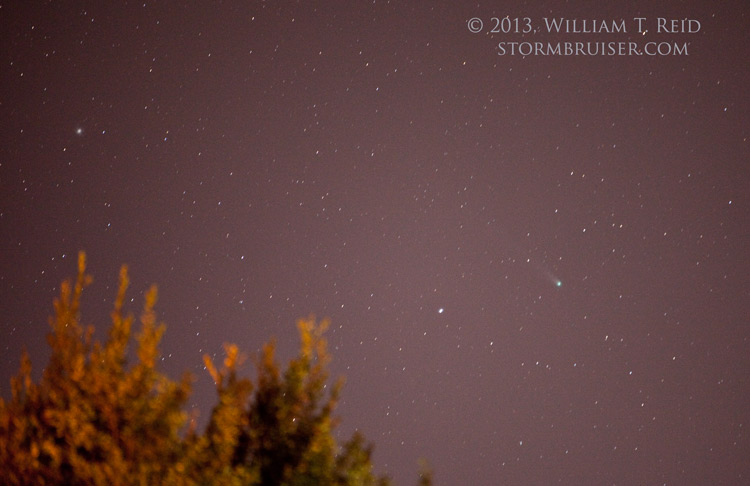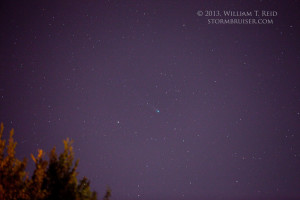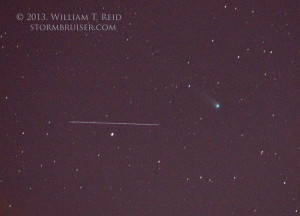The big comet event of the century (Comet ISON) was a dismal flop, but there is another comet currently “visible” in the northeast before sunrise. It is “Comet Lovejoy”, and it rises in the constellation Hercules an hour or two before the first light of dawn. It is very dim, likely only visible with the naked eye from the darkest places. With clear skies expected on Friday, December 13, I set my alarm to 5:20 a.m. in order to photograph it. I got out of bed at that horrible time of the morning and went into the area behind my condo with the tripod and camera. The skies were nice and clear, and it was calm and cold, about 33F. I had a fairly decent idea where to look —- low to the horizon to the ENE. Well, I couldn’t find the darn comet, even with the binoculars. To make a long story short, I took several images with the 70-200mm lens, pointing it towards where I THOUGHT the comet should be. And, lo and behold, it appeared in a couple of shots! But, it was getting brighter to the east by now (around 5:50 a.m.). This, coupled with the city glow in that direction, too, meant that I was done with comet photography on this morning. The image that I did get was slightly out of focus and the comet was not centered, so I needed to try to again on the 14th.
Saturday morning went much better (and it was a comfortable 50F!). I got up a bit earlier and knew exactly where to look for Lovejoy. Again, I could not see it with the binoculars, but it showed up in my first image. The comet was just to the right of Zeta Herculis, a star at magnitude +2.8 and the “bottom-right” star of the familiar trapezoid of Hercules. (I.e., “bottom-right” when Hercules is high in the sky, and “upper-right when it is rising in the east!) I took a bunch of images with the 5D and the lens zoomed all of the way to 200mm. The best settings seemed to be around f3.2, ISO 1600, 6-to-10 second exposures. Any exposures longer than that, and the star trails were a little too obnoxious. The city-light glow to the east, from the San Fernando Valley, probably overwhelmed some of the faint light of the comet’s tail. Still, the tail is very obvious, and I am happy with the results given the light pollution nearby.
The image above shows M13, the bright globular cluster in Hercules. It is near the left edge at a magnitude of 5.8, about the same as the comet on this morning. The final image, below, includes the streak of a satellite that is in orbit around Earth.




Leave a Reply
You must be logged in to post a comment.